If you’re following along on Instagram, you know that we’re on our annual trip to the Eastern Shore. These posts contain postcards from previous visits.

When we were getting ready for this year’s trip, I asked the boys what they were most excited about. Of course, they love every moment of these big adventures, but both of them mentioned crabbing, in particular, as something that they couldn’t wait to do again.
There are a number of different ways to catch blue crabs. We use primarily use two different methods:: crab pots (those big wire cages) and hand-lining.
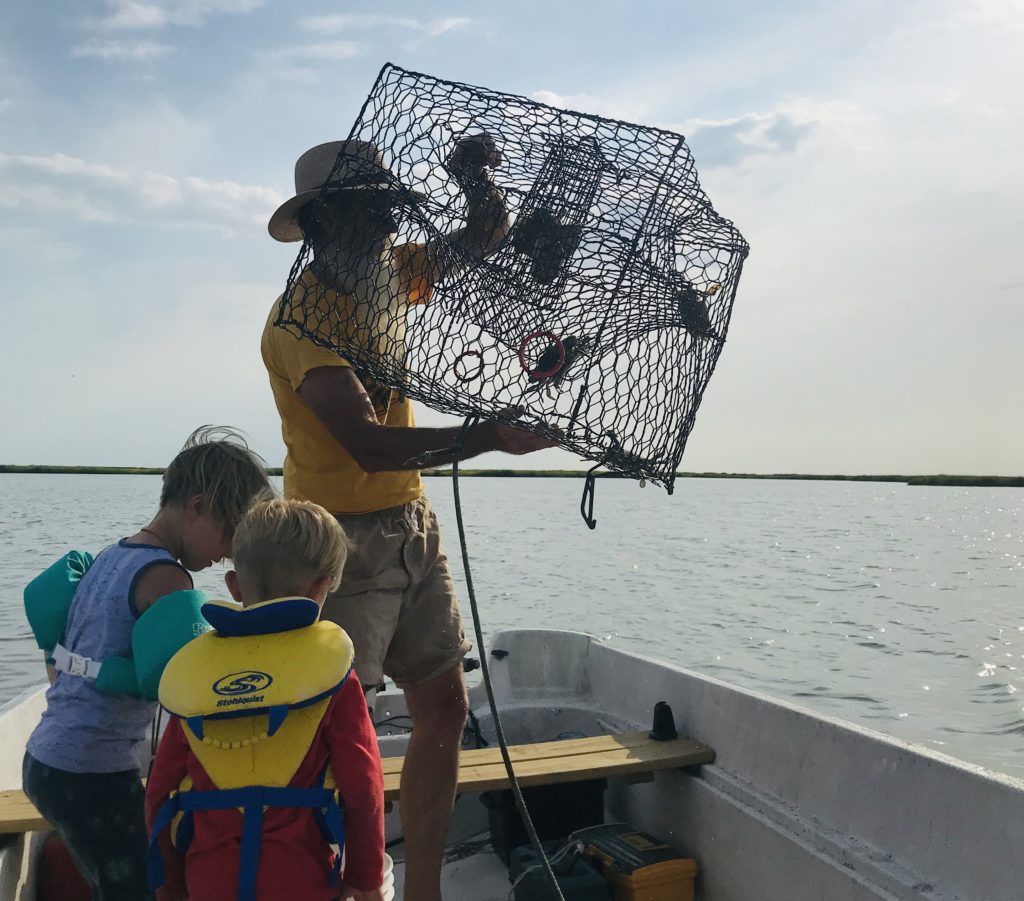
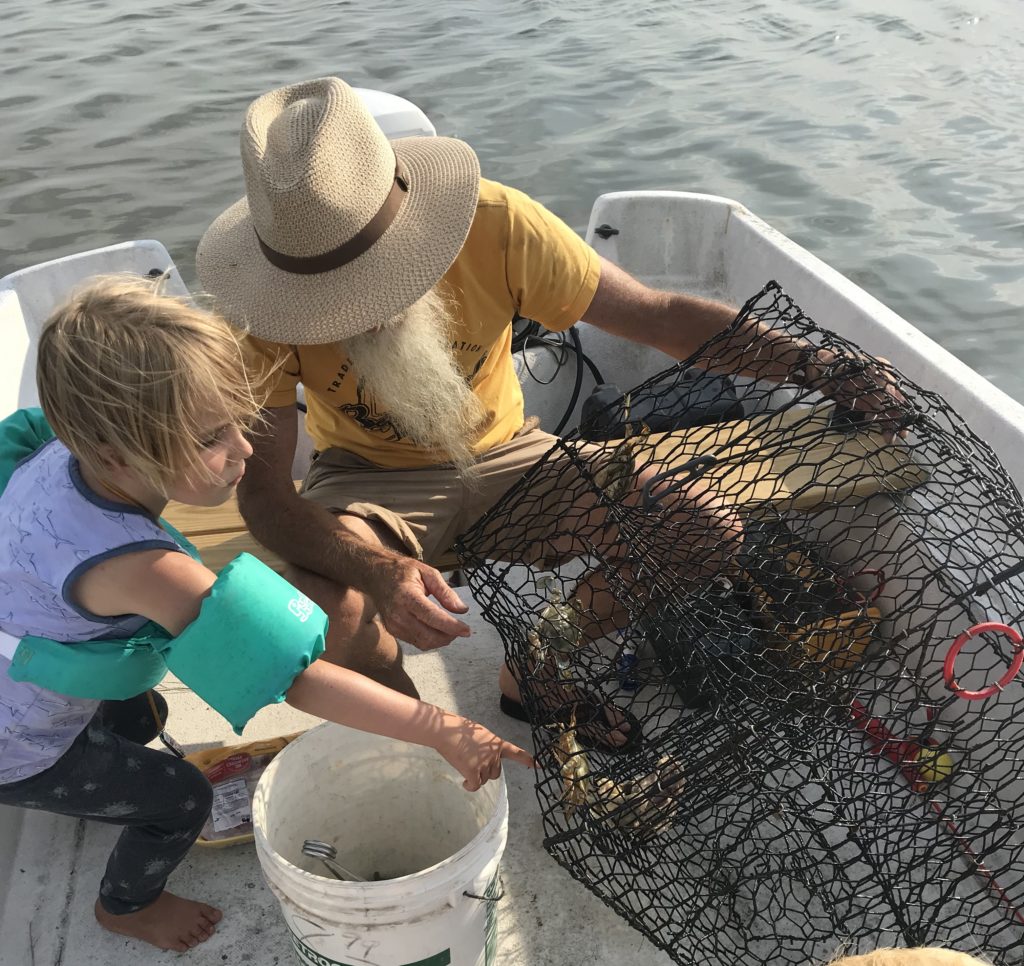
When crabbing with pots, you put bait in a small enclosure, drop the pots to the bottom of the water, and then let them sit for about a day before checking on them. All pots have a rope and buoy attached, so if you ever see those buoys bobbing in the water, there’s a good chance that someone’s pot is at the other end…. hopefully full of crabs!
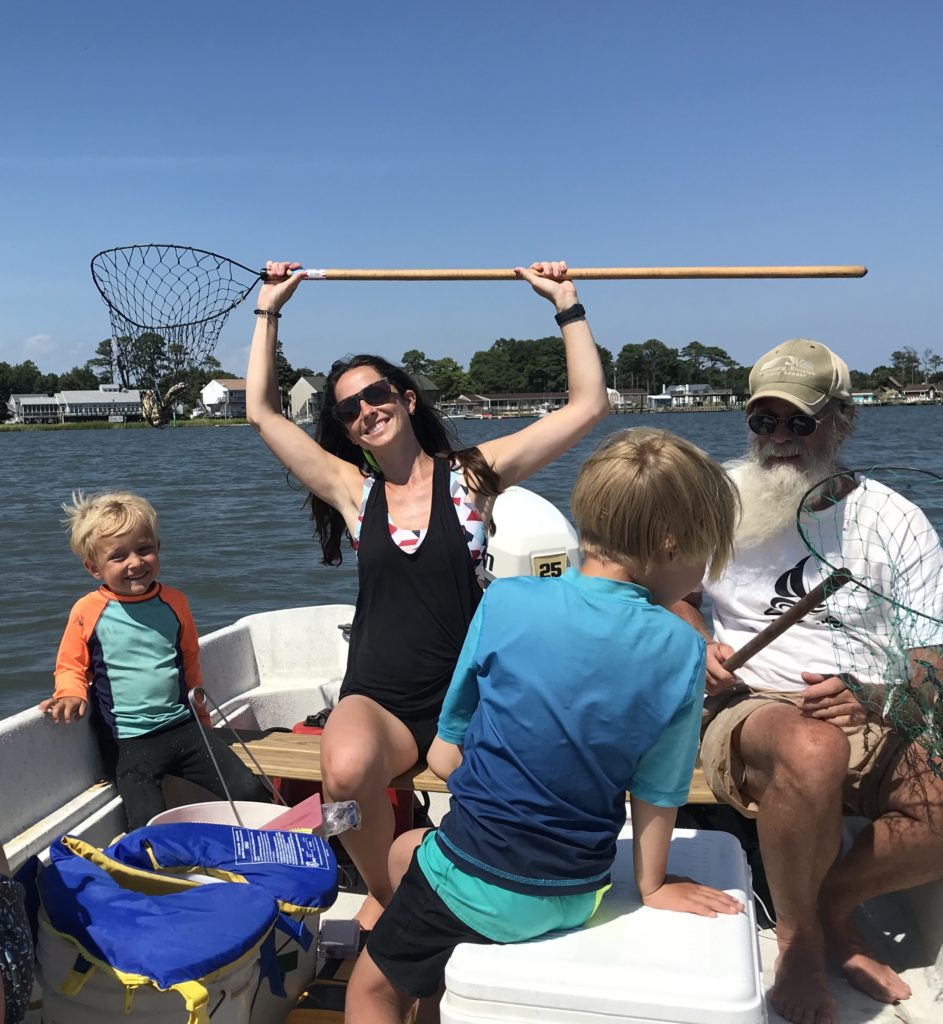
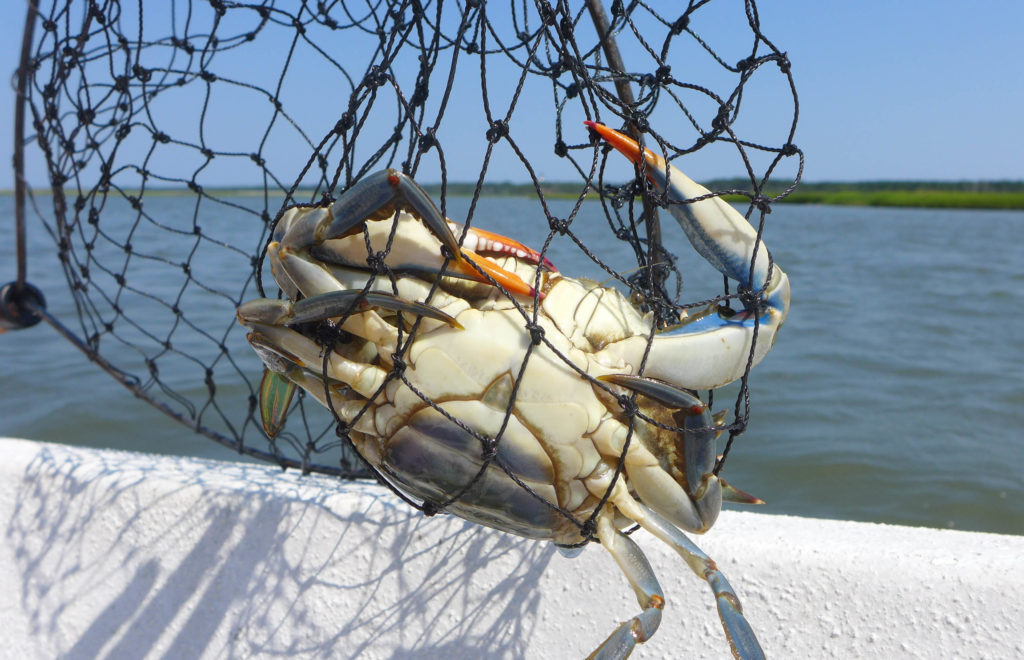
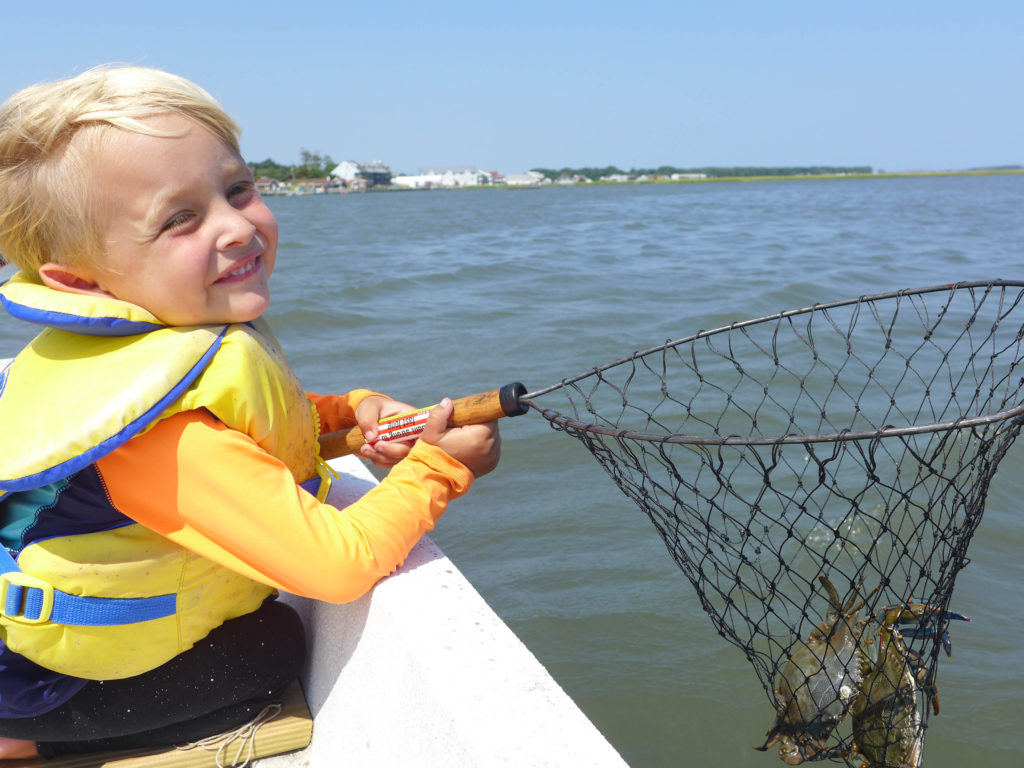
When we’re hand-lining, we have a long rope with bait attached to one end. We throw the bait over the side of the boat, let it fall to the bottom, and then slowly pull it in. As the bait gets closer to the surface of the water, it’s pretty easy to see whether or not you have something biting. If so, you use a long-handled net to scoop up the bate and crabs.
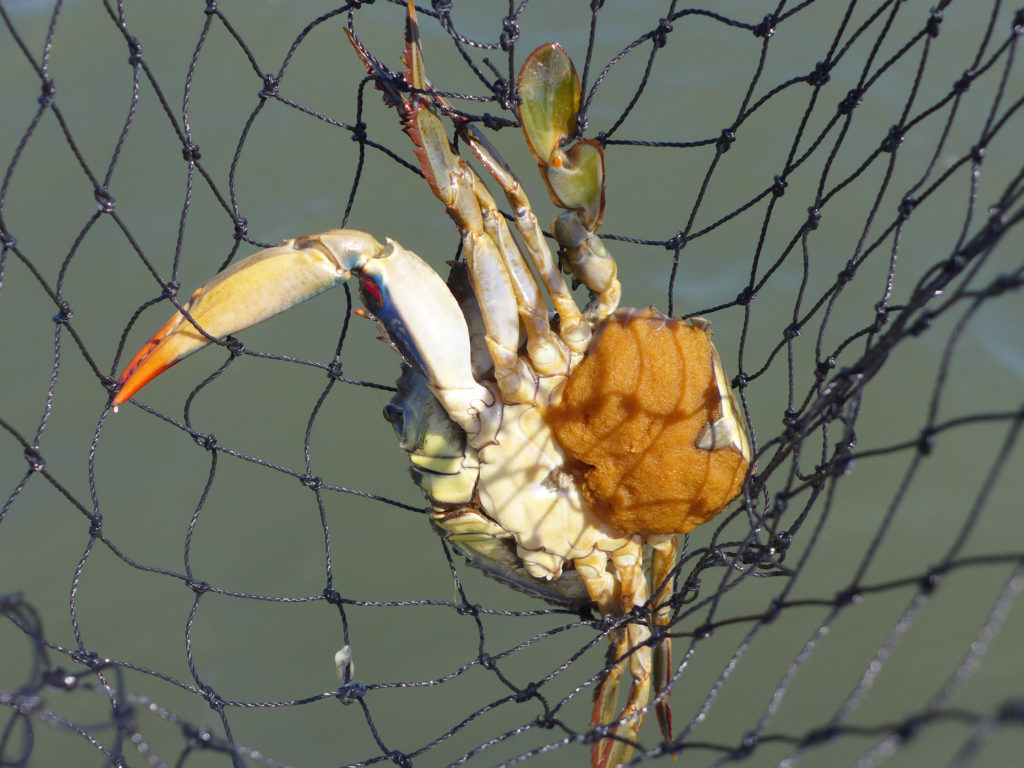
When crabbing, the rules for keepers are pretty simple. The most important thing to know is the difference between male, immature female, and mature female crabs.
- females: you can keep all mature females, but you can’t keep any immature females
- males: you can keep any males that measure at least 5 inches from tip to tip, but you can’t keep any that are under that length
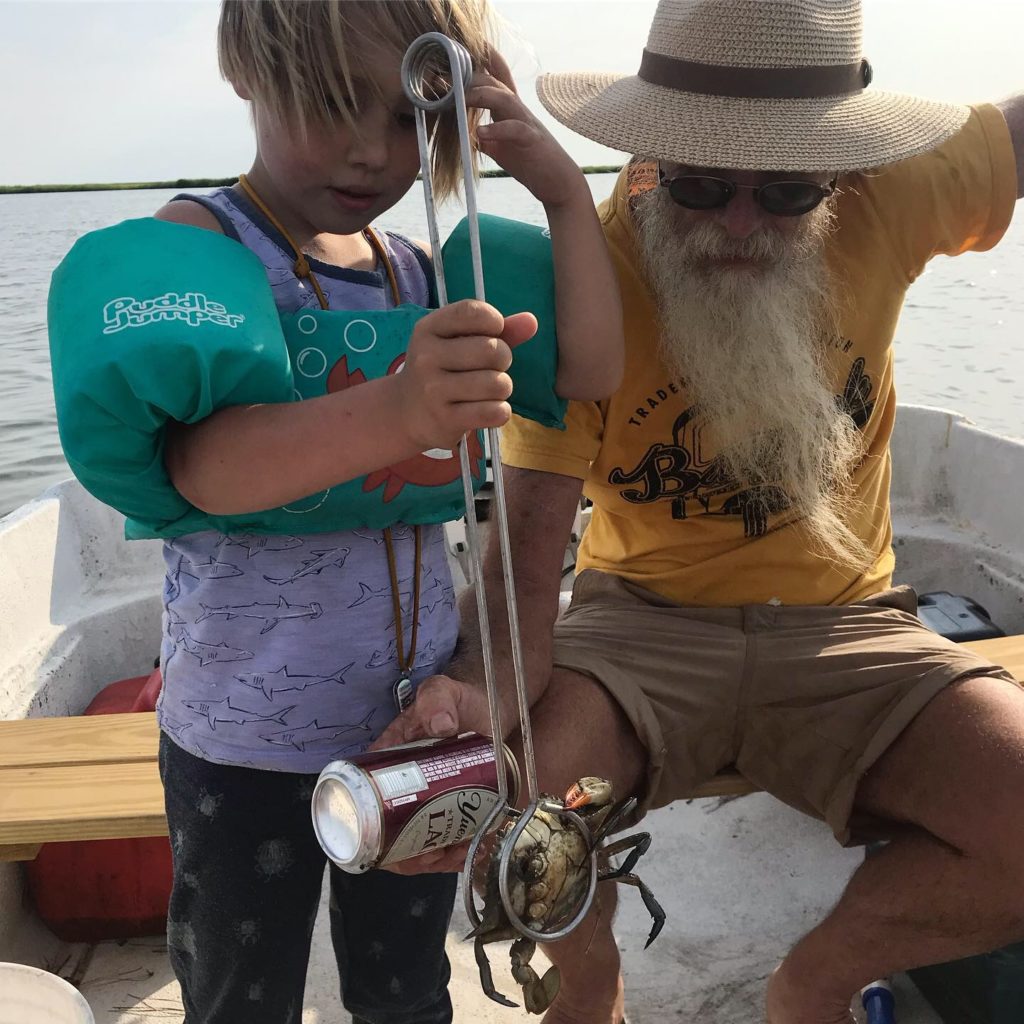

Luckily for us (and you), a beer can measures 5 inches from top to bottom! Pack your cooler, don’t forget the bait, and you’ll be set!
